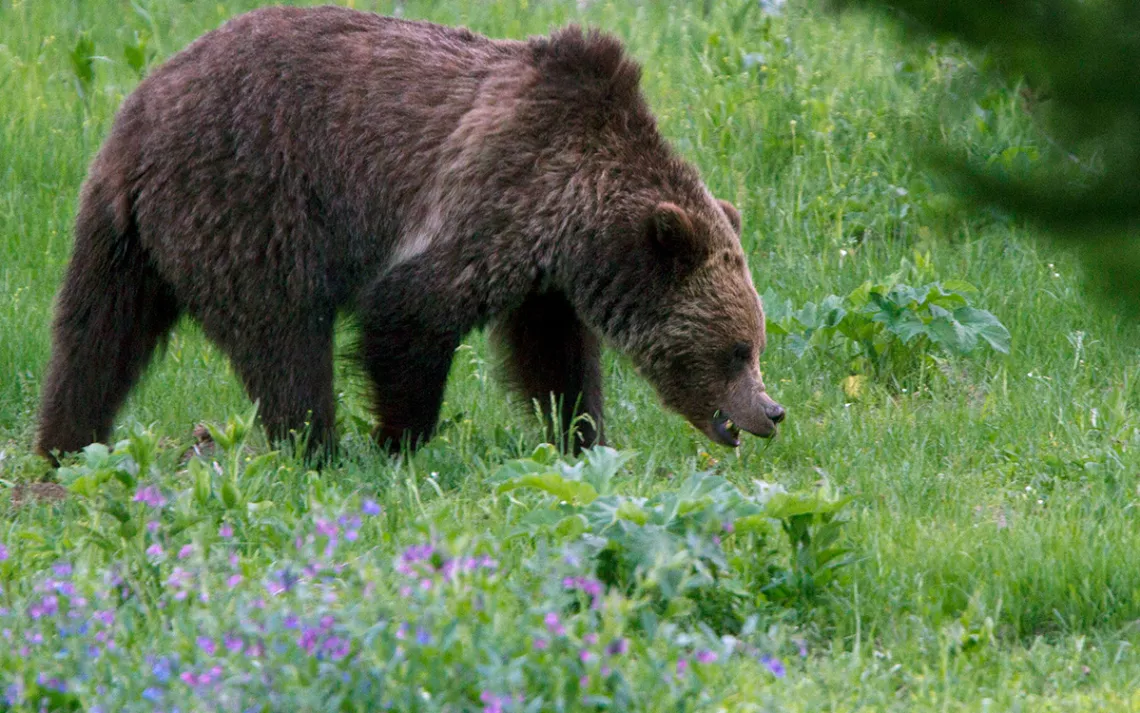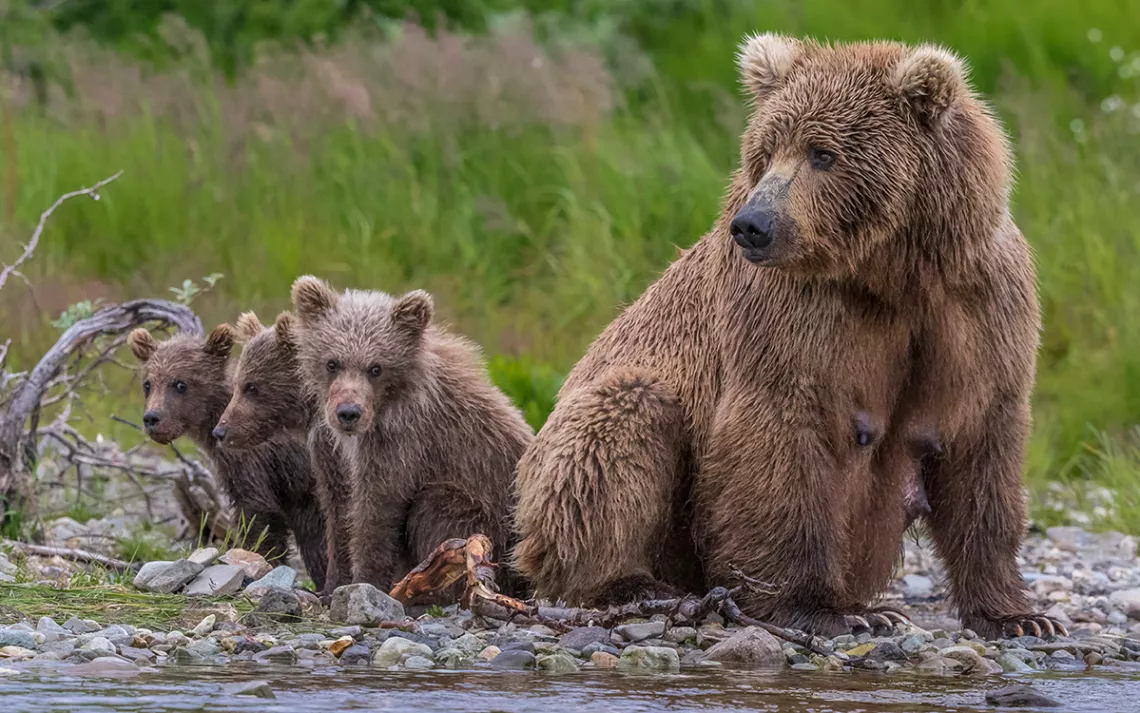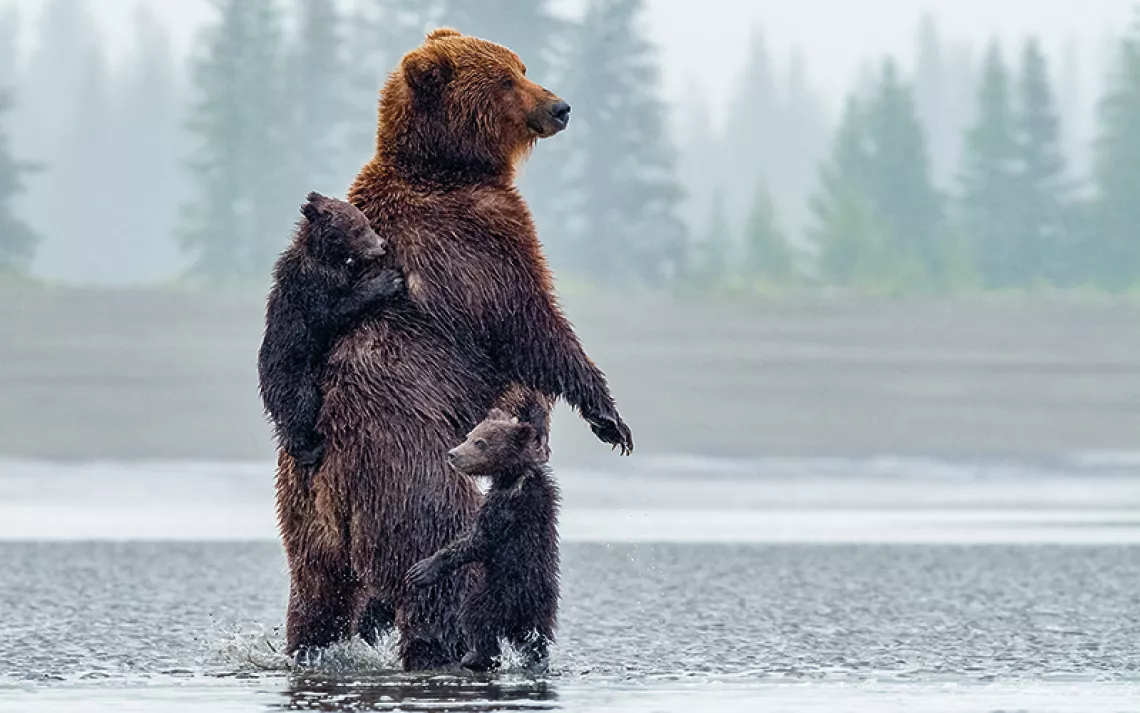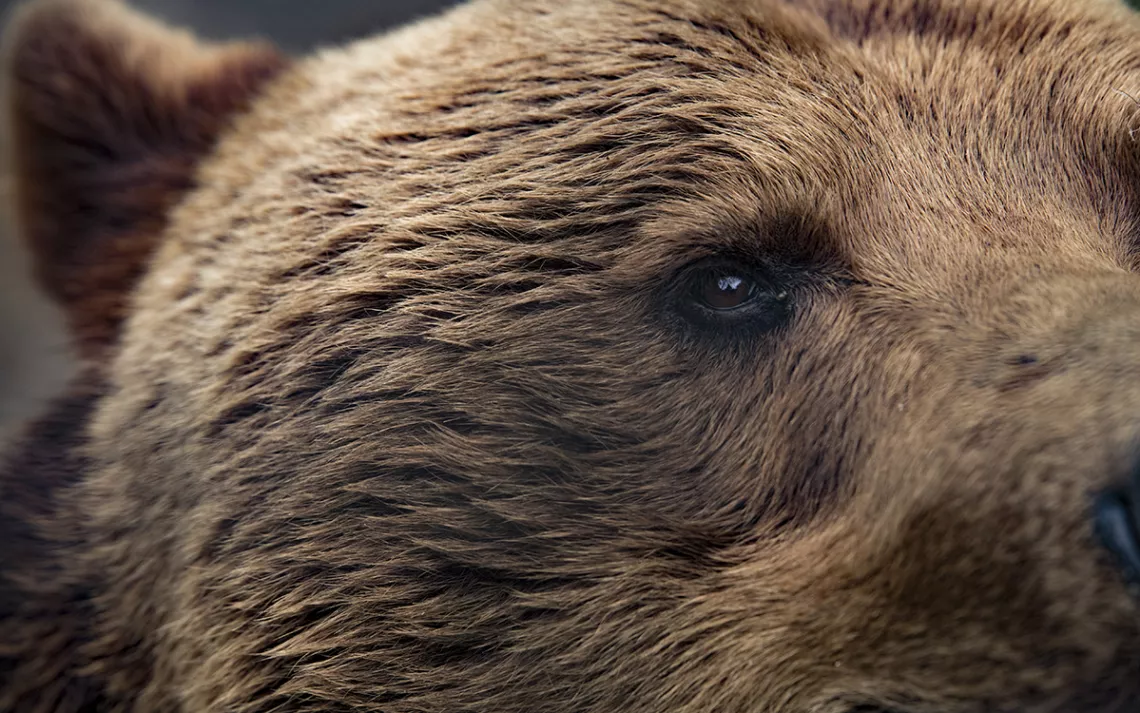The Bear Truth
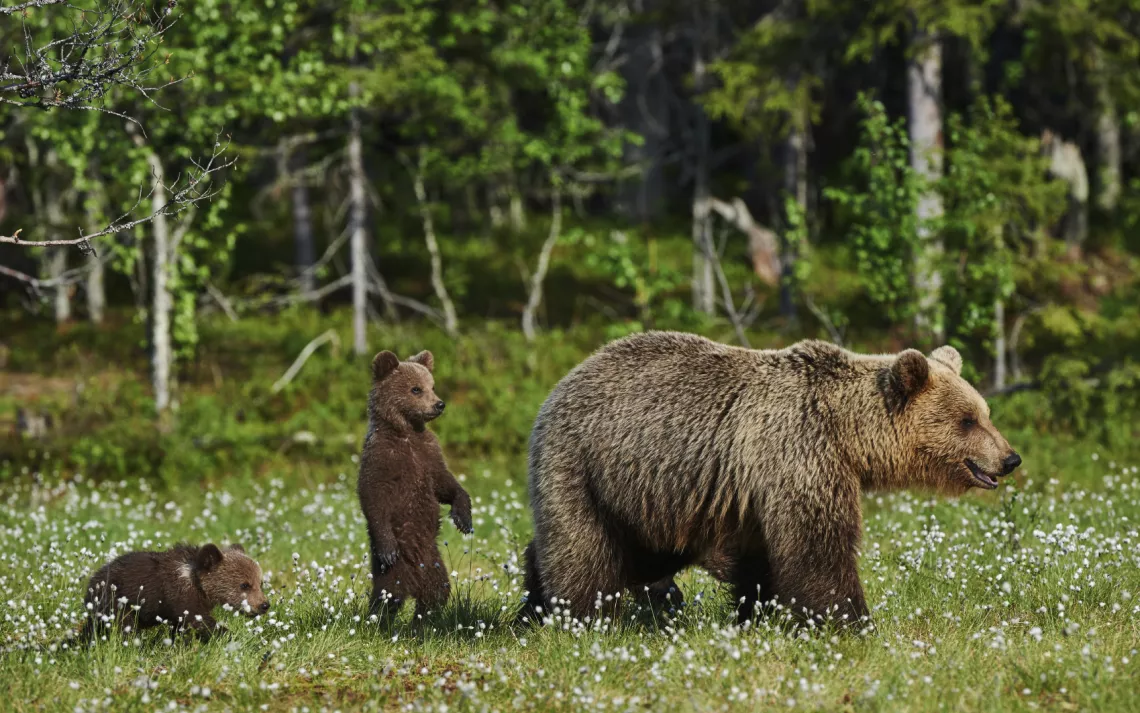
Photo by iStockphoto/LuCaAr
The U.S. Fish and Wildlife Service recently released a proposal to take the grizzly bears living within the Greater Yellowstone Ecosystem off the endangered species list. The USFWS maintains that the bears have met or exceeded all recovery goals.
It’s true that after 40 years of federal protection, grizzlies in the Yellowstone area have made an impressive comeback, reaching a population upwards of 700, from 136 in 1975. Their success is a testament to the effectiveness of the Endangered Species Act, but if the bears are delisted too soon, all of this progress could be unraveled.
With the Feds no longer watching out for the grizzlies, management would be handed over to the surrounding states of Idaho, Wyoming, and Montana. While they would be required to have extensive plans in place, the states are eager to open up to logging and development land that federal grizzly protection has rendered unavailable. Delisting would also mean that in the areas surrounding Yellowstone National Park, grizzlies would be treated as game, and regulated hunting of adult grizzlies would be allowed.
Grizzlies within Greater Yellowstone remain isolated from other bear populations, which limits their gene pool and makes them more vulnerable to natural disaster, disease, and food shortages, all of which are more likely to occur as the impacts of climate change intensify. Their current range is only 2 percent of what it was before settlers arrived. While protected under the Endangered Species Act, the grizzlies are able to roam 3,600 square miles of carefully monitored wilderness within Yellowstone Park and another 9,200 square miles near its borders that are protected from development and drilling. Nevertheless, human and bear interactions have been on the rise, reaching an all-time high in 2015. So if anything, the bears need more, not less space to avoid dangerous encounters with hikers, campers, and landowners.
While delisting a species is the eventual goal of the Endangered Species Act, it’s still too soon for the grizzlies of Greater Yellowstone. They should remain federally protected until they are able to regain their ecological footing by expanding their range and intermingling with other populations.
What You Can Do
Tell the U.S. Fish and Wildlife Service it's too soon to delist the Yellowstone grizzly bears.
 The Magazine of The Sierra Club
The Magazine of The Sierra Club
